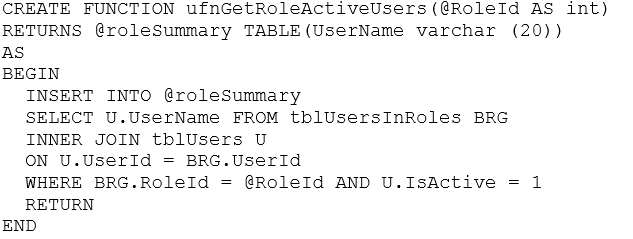What should you configure?
Your network contains a server named Server1 that runs Windows Server 2012. Server1 has the Hyper-V
server role installed.
Server1 hosts four virtual machines named VM1, VM2, VM3, and VM4.
Server1 is configured as shown in the following table.
VM2 sends and receives large amounts of data over the network.
You need to ensure that the network traffic of VM2 bypasses the virtual switches of the parent partition.
What should you configure?
What should you configure?
Your network contains a server named Server1 that runs Windows Server 2012 R2. Server1 has the Hyper-V
server role installed.
Server1 hosts four virtual machines named VM1, VM2, VM3, and VM4.
Server1 is configured as shown in the following table.
VM3 is used to test applications.
You need to prevent VM3 from synchronizing its clock to Server1.
What should you configure?
What should you configure?
Your network contains a server named Server1 that runs Windows Server 2012. Server1 has the Hyper-V
server role installed.
Server1 hosts four virtual machines named VM1, VM2, VM3, and VM4.
Server1 is configured as shown in the following table.
You plan to schedule a complete backup of Server1 by using Windows Server Backup.
You need to ensure that the state of VM1 is saved before the backup starts.
What should you configure?
What should you configure?
Your network contains a server named Server1 that runs Windows Server 2012. Server1 has the Hyper-V
server role installed.
Server1 hosts four virtual machines named VM1, VM2, VM3, and VM4.
Server1 is configured as shown in the following table.
You install a network monitoring application on VM2.
You need to ensure that all of the traffic sent to VM3 can be captured on VM2.
What should you configure?
You need to recommend a solution to minimize the amount…
Your network contains an Active Directory domain named contoso.com. The domain contains a server named
Server1. Server1 runs Windows Server 2012 R2 and has the Hyper-V server role installed.
On Server1, you create and start a virtual machine named VM1. VM1 is configured as shown in the following
table.
You plan to create a checkpoint of VM1.
You need to recommend a solution to minimize the amount of disk space used for the checkpoint of VM1.
What should you do before you create the checkpoint?
Which Transact-SQL statement should you run?
Note: This question is part of a series of questions that use the same or similar answer choices. An
answer choice may be correct for more than one question in the series. Each question is independent
of the other questions in this series. Information and details provided in a question apply to that
question.
You have a database for a banking system. The database has two tables named tblDepositAcct and
tblLoanAcct that store deposit and loan accounts, respectively. Both tables contain the following columns:
You need to run a query to find the total number of customers who have both deposit and loan accounts.
Which Transact-SQL statement should you run?
Which Transact-SQL statement should you run?
Note: This question is part of a series of questions that use the same or similar answer choices. An
answer choice may be correct for more than one question in the series. Each question is independent
of the other questions in this series. Information and details provided in a question apply to that
question.
You have a database for a banking system. The database has two tables named tblDepositAcct and
tblLoanAcct that store deposit and loan accounts, respectively. Both tables contain the following columns:
You need to determine the total number of customers who have only loan accounts.
Which Transact-SQL statement should you run?
Which Transact-SQL statement should you run?
Note: This question is part of a series of questions that use the same or similar answer choices. An
answer choice may be correct for more than one question in the series. Each question is independent
of the other questions in this series. Information and details provided in a question apply to that
question.
You have a database for a banking system. The database has two tables named tblDepositAcct and
tblLoanAcct that store deposit and loan accounts, respectively. Both tables contain the following columns:
You need to determine the total number of customers who have either deposit accounts or loan accounts, but
not both types of accounts.
Which Transact-SQL statement should you run?
Which Transact-SQL statement should you run?
You have a database named MyDb. You run the following Transact-SQL statements:
A value of 1 in the IsActive column indicates that a user is active.
You need to create a count for active users in each role. If a role has no active users. You must display a zero
as the active users count.
Which Transact-SQL statement should you run?
How should you complete the Transact-SQL statement?
HOTSPOT
You have a database that contains the following tables: tblRoles, tblUsers, and tblUsersInRoles.
The table tblRoles is defined as follows.
You have a function named ufnGetRoleActiveUsers that was created by running the following Transact-SQL
statement:
You need to list all roles and their corresponding active users. The query must return the RoleId, RoleName,
and UserName columns. If a role has no active users, a NULL value should be returned as the UserName for
that role.How should you complete the Transact-SQL statement? To answer, select the appropriate Transact-SQL
segments in the answer area.
Hot Area:













